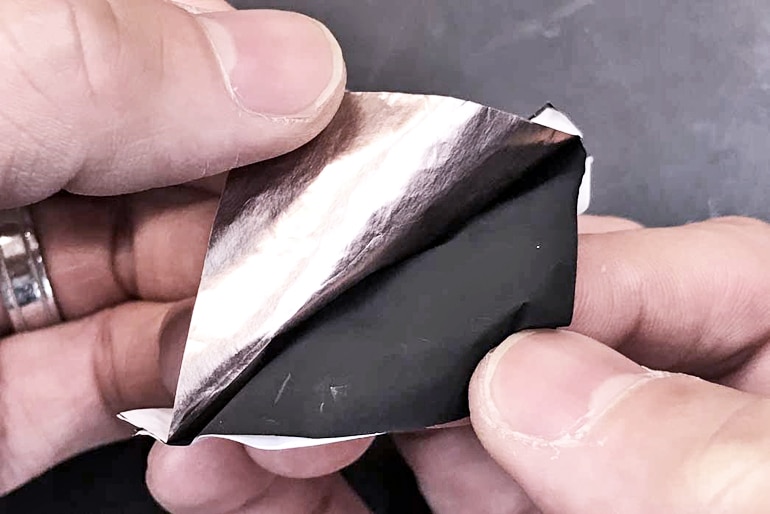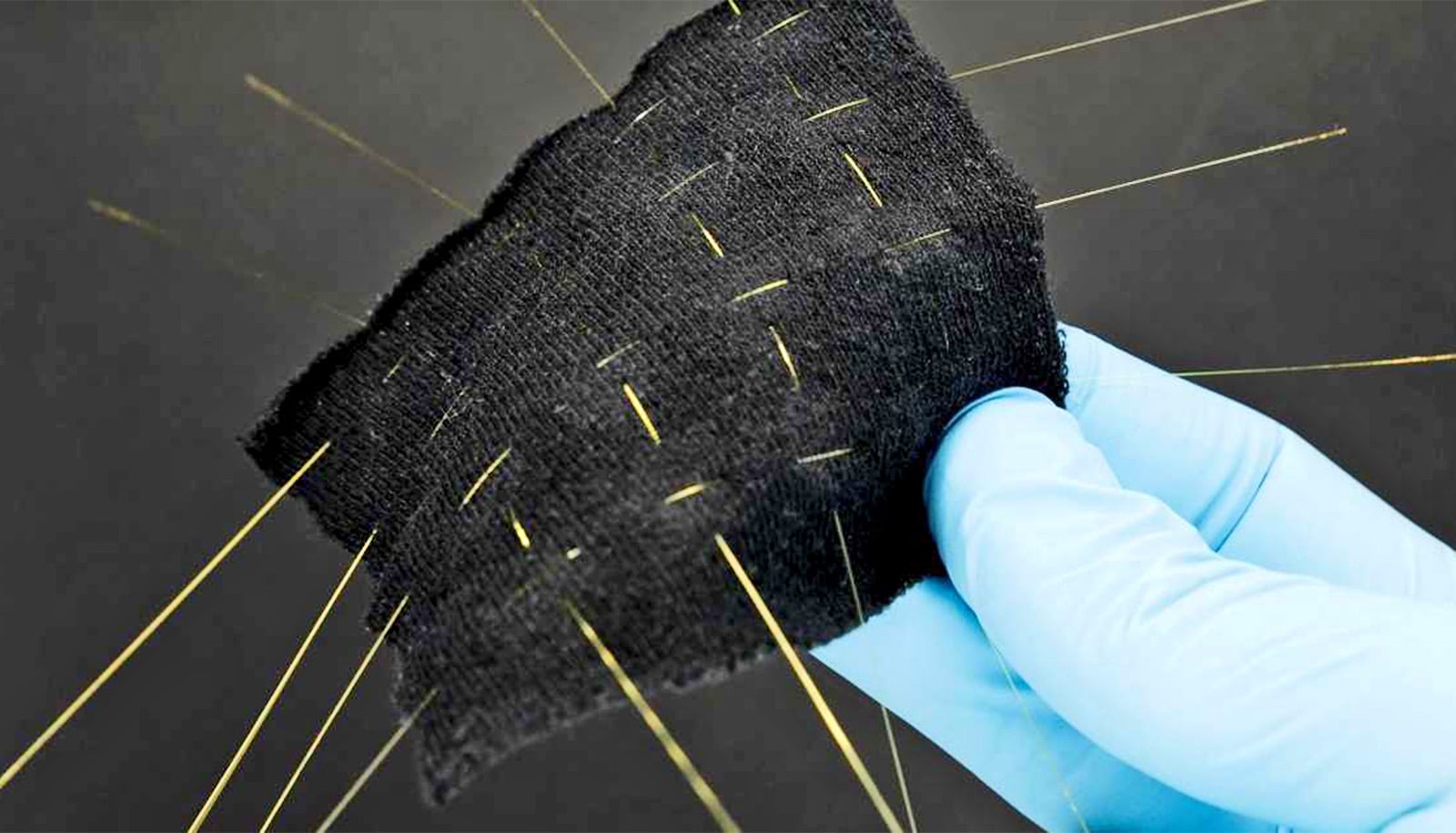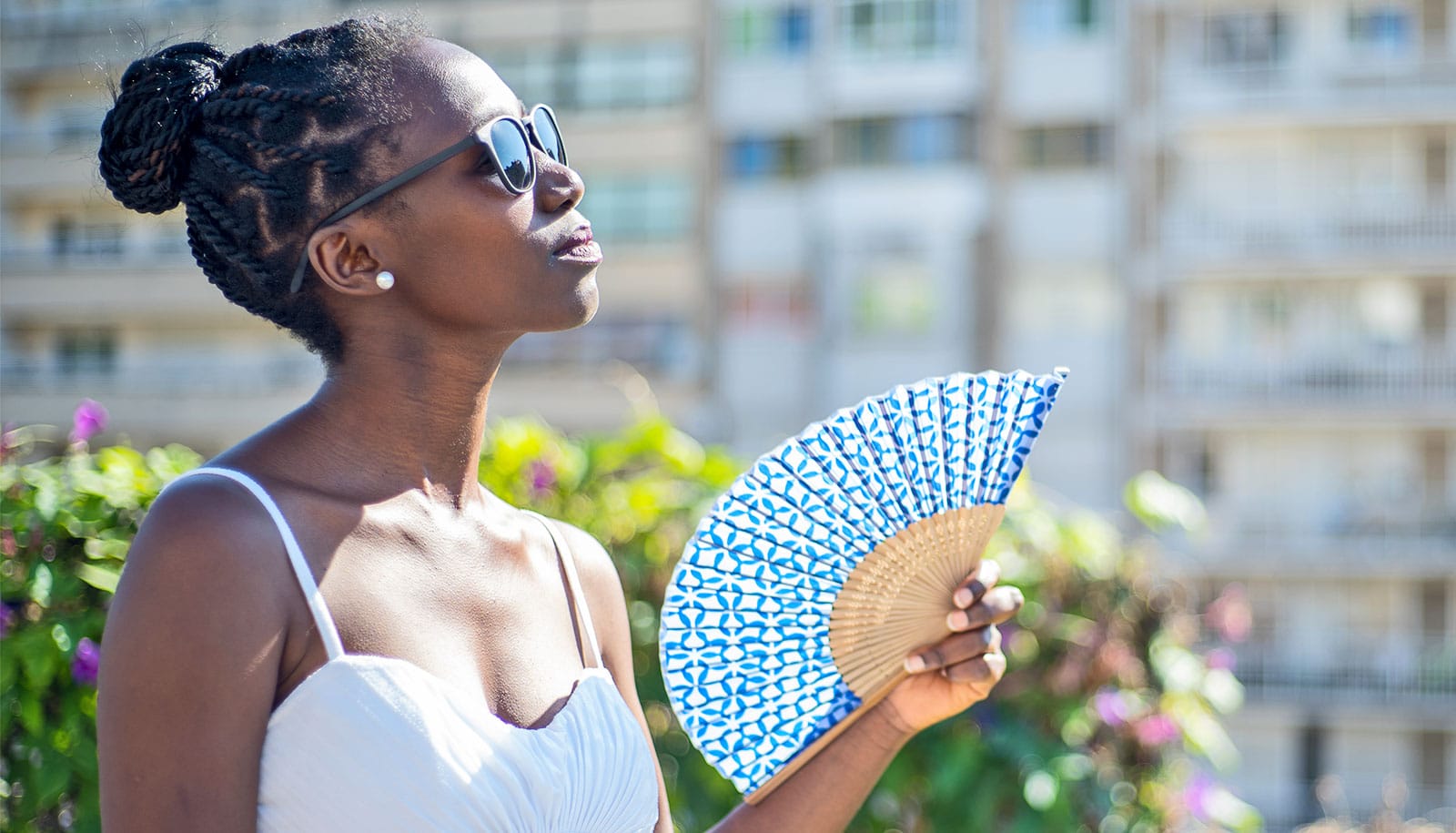A reversible fabric keeps skin a comfortable temperature whatever the weather—and could save energy by keeping us away from the thermostat.
As reported in Science Advances, the double-sided fabric is based on the same material as everyday kitchen wrap and can offer warmth or cooling depending on which side faces out.
“Why do you need to cool and heat the whole building? Why don’t you cool and heat individual people?”
“Why do you need to cool and heat the whole building? Why don’t you cool and heat individual people?” says Yi Cui, professor of materials science and engineering at Stanford University, who thought if people could be more comfortable in a range of temperatures, they could save energy on air conditioning and central heating.
Thirteen percent of all of the energy consumed in the United States is due to indoor temperature control. But for every 1 degree Celsius (1.8 degrees Fahrenheit) that a thermostat is turned down, a building can save a whopping 10 percent of its heating energy—and the reverse is true for cooling. So adjusting temperature controls by just a few degrees could have major effects on energy consumption.
Our bodies have all sorts of ways to control our temperature. When it’s cold, the hairs in our skin stand out to trap warm air. Eventually, we may start shivering to produce more radiant heat in our muscles.
When it’s hot, we release heat as infrared radiation from our skin, and if we’re still warm we start to sweat. Water evaporating away from our bodies carries a large amount of heat with it.
But those mechanisms only help within a few degrees. Get outside the temperature range to which our bodies can adapt, and we reach for the dial on the heating or air conditioning.
In 2016, Cui’s team came up with a first step toward a solution: fabric that allowed the body’s heat to pass through, cooling the skin. Although the inspiration came from transparent, water-impermeable kitchen wrap, the new material was opaque, breathable, and retained its ability to shuttle infrared radiation away from the body.
“Right around when we figured out cooling, then came the question: Can you do heating?”
Compared to a cotton sample, the fabric kept artificial skin 2 C cooler in a laboratory test—possibly enough to stop a person from ever reaching for a fan or the building thermostat. The team’s first textile could save a building full of workers 20 to 30 percent of their total energy budget.
“Right around when we figured out cooling, then came the question: Can you do heating?” says postdoctoral fellow Po-Chun Hsu, who is the new paper’s first author. It was a particularly chilly winter, and he was headed to a conference in Minneapolis with a carry-on bag full of coats. Could he create an article of clothing that would serve him in a crowded warm conference room as well as on the frosty street?
Hsu realized that controlling radiation could work both ways. He stacked two layers of material with different abilities to release heat energy, and then sandwiched them between layers of the cooling polyethylene.

On one side, a copper coating traps heat between a polyethylene layer and the skin; on the other, a carbon coating releases heat under another layer of polyethylene. Worn with the copper layer facing out, the material traps heat and warms the skin on cool days. With the carbon layer facing out, it releases heat, keeping the wearer cool.
‘Smart fabric’ could store passcodes or I.D. in clothes
Combined, the sandwiched material can increase a person’s range of comfortable temperatures over 10 F—and the potential range could be much larger—closer to 25 F. With people wearing that kind of textile, buildings in some climates might never need air conditioning or central heating at all.
But the white-colored fabric isn’t quite wearable yet.
Other possible applications include clothing with medical devices—and even entertainment—printed right into the fabric.
“Ideally, when we get to the stuff you want to wear on skin, we’ll need to make it into a fiber woven structure,” Cui says. Woven textiles are stronger, more elastic, more comfortable, and look much more like typical clothing. But good news: They’ve already started testing to make sure the fabric will be machine washable.
“From my perspective, this work really highlights the significant opportunities in combining thermal engineering concepts with nanophotonic structures for creating novel functionalities,” says Shanhui Fan, a professor of electrical engineering.
The team’s ambitions don’t stop there. Other possible applications include clothing with medical devices—and even entertainment—printed right into the fabric.
“I think we are only seeing the beginning of many creative ideas that can come out of such combinations,” Fan says.
The Advanced Research Projects Agency–Energy, US Department of Energy funded the work.
Source: Vicky Stein for Stanford University



